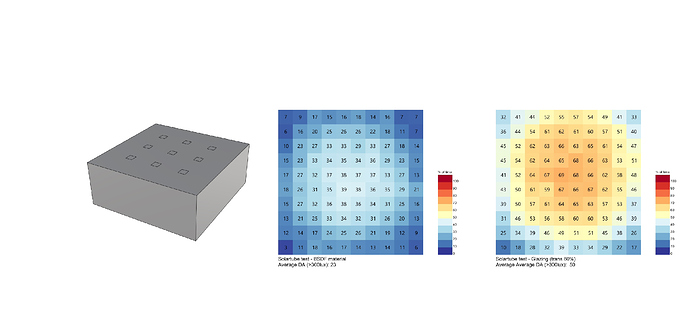Hey Sarith,
Thanks for your response. I will test this approach for a Point in time simulation.
This reply answers my original question.
After doing some more research I found that using a BSDF material in a better solution for annual simulations. I also read this valuable discussion:
However, after setting up the workflow, the results seemed much lower than expected. In order to increase insight, I made a comparison with the same geometry, but changing the BDSF material to a glazing material. I would expect the solar tubes to give better illumination performance compared to same-sized skylights, but the simulations indicate otherwise:
In this example workflow, the size of the solartubes/skylights is based on the Solatube XML file (width = 0.60960 m) and the roomsize is 10x10x4m. I used the standard EPW file for Amsterdam. All files are included in the zip-archive below:
BSDF_Solartube_test.zip (448.1 KB)
I can’t find any explanation for the solar tubes performing significantly worse compared to the glazing skylights of the same size, but since it is my first time working with BSDF materials I might have missed something.
Any thoughts?
Many thanks in advance
Regards,
Shane
